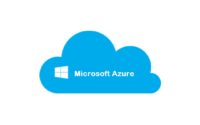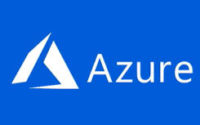Top 20 most helpful information/checklist that any Azure Pre Sales Architect should keep handy in 2017.
If you are planning to meet your customer for a large transformation and migration deal with Azure offering, you are done with all your homework, presentation and ready to crack the deal, hold on… before you make any promises, please spend some time to check this 20 most helpful webpages or URL’s which may make yourself and your customer happy and your delivery team life lot easier in future. I have complied this list based on my personal experience and I hope this will make a big difference during any RFP/RFI or HLD/LLD or SoW preparation on Azure.

Credit: “Royalty Free” photo from www.pexels.com
1. Azure Pricing Calculator.
Azure pricing calculator is something which you need at every step of your engagement with the customer, here is the link for the Azure Pricing Calculator.
For the Azure CSP the pricing calculator is available in the CSP portal.
2. Azure Subscription Limits and Quotas.
A must have URL to know about the available quota per subscription which will help for a smooth design during the HLD phase, here is the link for that Azure subscription and service limits, quotas, and constraints.
3. Cost control in Azure.
When you are in deep discussion with the customer one of the basic question customer may ask you what to do if my budget overshoot in Azure, in that case you should be capable enough to answer this tricky question, although there are few 3rd party products like Cloud Cruiser available in Azure Market place for the cost control however they don’t have support for Azure CSP, this below URL is one of the native feature in Azure and that will serve the purpose without much effort Setup Billing Alerts in Azure.
4. Running non-supported Windows OS in Azure.
What will happen to my legacy applications running on Windows 2003, can I move them to Azure? This is one of the frequently asked question you may face during your sessions with your customer and you should be ready with the answer, first of all you should know that Windows 2003 VM is no longer officially supported in Azure however you may run them as long as you want and more details can be found in this Windows 2003 VM’s in Azure. However a 2nd option is to inform the customer about running them in a designated Hyper-V host in Azure which can be easily build with the new nested virtualization introduced in Azure.
5. Azure Site Recovery Supported scenario,
Azure site recovery is very successful in all types of migration activities to Azure except few areas where it may become a pain at a later stage for the delivery team, when they are in mid of a migration process and they may discover that the VM or the physical machine can’t be moved to Azure with the help of ASR due to one or the other unsupported scenarios. In one of my earlier article I have mentioned the same thing, which you can fine here. (Azure ASR Limitations which is difficult to bypass)
Under this type of situation customer may loss trust in your delivery team and there may be conflict arises between delivery and the pre sales team regarding who has promised this deliverable to the customer. So it’s always recommend and advisable to learn the different scenarios which are supported by the ASR process. Please find the below URL’s which can help here.
6. Running Oracle Database in Azure.
Can I able to run my oracle databases in Azure, how can I move large Oracle databases to cloud? This is also one of the common question if the enterprise is having lots of Oracle databases in their environment. ASR may be used for Oracle databases but if the oracle VM’s or physical machine are not supported by ASR, it’s better to use the Oracle data guard for the migration.
Here is an article which can help you to answer some basic questions on Oracle migration to Azure Supported scenarios and Migration options for the Oracle database in Azure.
7. Site connectivity in Azure
Can I able to connect my existing on premise sites to Azure, do I need to invest in new VPN routers and Gateway? This is one of the common question you should be ready to answer for your customer and MS provide a list of the supported VPN routers however this list may not cover all the routers available in the market. For example the TP-LINK router which I am using for my home office is not covered in this list while I able to setup the VPN connectivity with Azure. To know more please click here.
Please find the supported routers Supported VPN Routers in Azure.
8. Comparison with AWS.
Please expect set of questions when you meet your customer about similar offering from the Amazon Web Services, so I will suggest that you should prepare yourself with a high level product comparison between AWS and Azure. I have recently complied a head to head comparison between Azure and AWS offering and I am sure this comparison is definitely going to help you.
Please find my post below Azure VS. AWS Head to Head Comparison Q3 2017
9. Moving resources from one subscription to another.
Now this is an important question if customer already have some foot print in Azure and there is a chance that you can on board them in your CSP subscription or maybe you are advising them for a EA option. The question regarding the movement of resources from once subscription to another is an important question you should be capable to answer at first place.
Here is a post for that Move resources from one Subscription to another.
10. Life Cycle Policy of Azure Resources.
Although this question may not be important for some customer however I have seen many customer wanted to know if there is any impact on their applications if Microsoft changes the underlying hardware.
A detail explanation about the Azure Life Cycle Policy can be found in this article Life Cycle Policy for Azure Resources.
11. Total cost of ownership (TCO) in Azure and in AWS.
This is one of the most discussed topic during the estimation and proposal preparation phase, generally Microsoft pre sales consultant must have already completes this process before the release of the RFP or bid documents, however you should also know about this. And I believe this two URL’s below should help you to answer any quick question on the TCO during your discussion with the customer.
Total cost of Ownership for Azure.
Total cost of ownership for AWS.
12. Azure Stencils.
As an Azure pre-sales architect you will need the Azure Visio and PowerPoint stencils + icon sets and they are available for the download at the Microsoft site, which will help you a lot. This is a must have tool for your successful presentations, for the High Level and Low Level design and you will need it throughout the bid process and every new deal which you will participate. Please download the Azure stencils below here.
Microsoft Azure, Cloud and Enterprise Symbol / Icon Set – Visio stencil, PowerPoint, PNG, SVG
13. Azure data centre compliance.
Compliance of the Azure data center, when the security folks from the customer will ask you about many compliance related questions in Azure and you can directly target them to this URL and they will get the answers of all their questions, so this URL should be a handy one for you or else there is a big chance that the security guys can put a cold water in your presentation and they may switch to different vendor who can convince them better on the security part and no doubt the security guys have an important role in all your deals.
Here is a list of the Compliance of the Azure Data Center.
14. Azure Product Availability by region.
Not all the azure products are available at all the Azure regions, so before you promise anything about any particular Azure data center, please take a quick look into this URL mentioned below:
Product availability by Regions.
15. Azure Backup – Supported Scenarios.
This is an important area which has to be addressed correctly during the pre-sales bid otherwise it may again become a pain for the delivery team. For example recently in one of the project I have found that the pre sales team has promised for the ASR move of the Windows 2008 R2 SP1 VM’s in Azure because they are very well supported by ASR however after the first wave the delivery team found that they can’t install the Azure backup agent in the Windows 2008 VM’s which are 32 bit, and that results in a complete back out of the ASR move. This kind of situation can give a bad name to you during the execution part so be very careful and you should must add this URL in your check list.
16. Monitoring – Azure Log Analytics-Supported Data Sources.
And here comes the monitoring and this is going to be part of most of your deals and if you have chosen to prescribe the Azure monitoring solution in your offering please don’t forget to take a quick look on the supported data sources. You should keep in your mind that you can’t monitor everything with the Azure Log Analytics. For example if customer want’s a monitoring solutions for their web applications you may need to direct them to the 3rd party solutions available in the Azure Market Place like AppDynamics etc. However for the present data sources which are supported you can take a look into this below URL.
Azure Log Analytics Supported Data Sources
17. Azure Reference Architecture.
Whether you are a novice or an expert in the on premise architecture design, this is the time you should spend few days understanding the Azure Application Architecture, you have to understand that most of architecture in Azure cloud is based on the SRH guidelines, which is nothing but the scalability, resiliency and high availability. This below two URL’s should be enough to understand and master the probable going to be architecture in Azure for your customers.
18. Azure Express Route.
Azure express route is always a point of discussion in many customer’s engagement and many of them would like to put it in the kitty of the network team but you should be ready with some of the FAQ of the Azure ExpressRoute and here is the URL for that.
19. Business Continuity and Disaster Recovery in Azure.
Azure BCP or DR is something like elephant in the room. This is you need to well plan before the final commitment during the engagement with customer. If required please setup a small POC with few set of application to validate your concept before finalizing the SoW.
You should also should be aware of the common terms which is used in any DR process as shown below and this has to be agreed by your customer or the application owners. Some of them are listed below. You should know what needs to recovered in case of DR.
RTO: The recovery time objective (RTO), which is the maximum acceptable length of time that your application can be offline.
RPO: A recovery point objective (RPO), which is the maximum acceptable length of time during which data might be lost due to a major incident. Note that this metric describes the length of time only; it does not address the amount or quality of the data lost.
Here is a list of URL which are going to help you in this process.
Business Continuity and Disaster Recovery in Azure in the Azure Paired Regions.
Disaster Recovery for the Azure Applications.
High Availability of the Azure Applications.
Designing resilient applications for Azure.
20. What is there in Azure stack?
This is a question which many consultants are facing from the customers for the last few months and as an Azure pre-sales architect you should be aware of what is there in Microsoft Azure Stack and how can you compete with it with the other hyper converged vendors available in the Market. Here is an article which will definitely increase your knowledge on Azure stack.
Key features and concepts in Azure stack.
That’s make the final list of 20 but this is of course not the end, being a player in tough competition, you should constantly can stay informed of innovations, new releases and product reviews of the Azure world to get ahead of others. Hope you will like this post.
Best of luck for your next Azure Assignment.



Very informative information for the Azure Pre Sales Team. Great work.
Yes, very good collection for presales team for Azure.Cheers!!